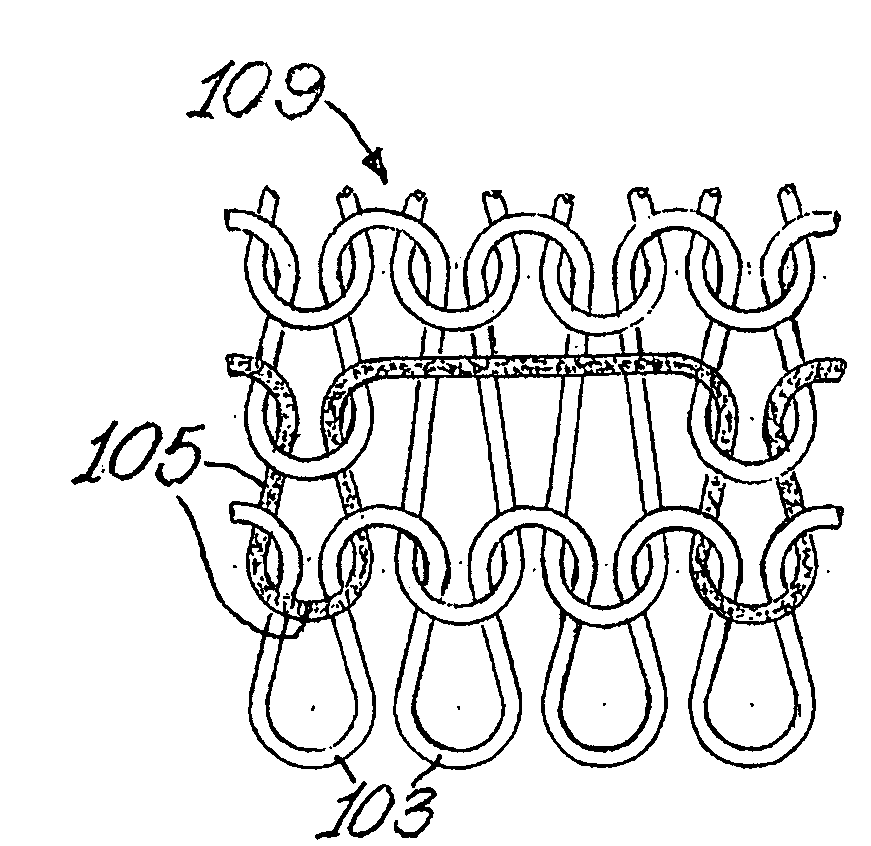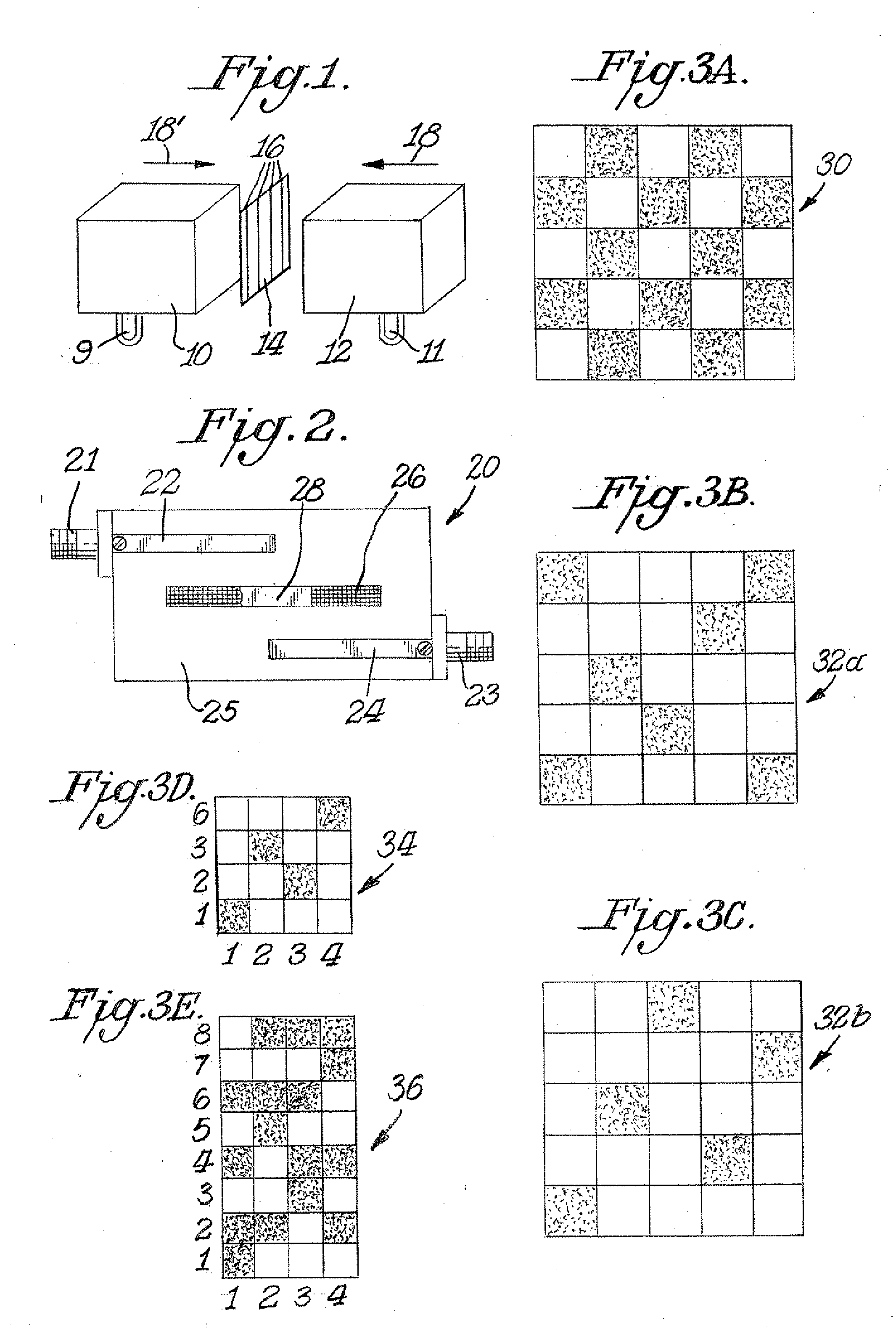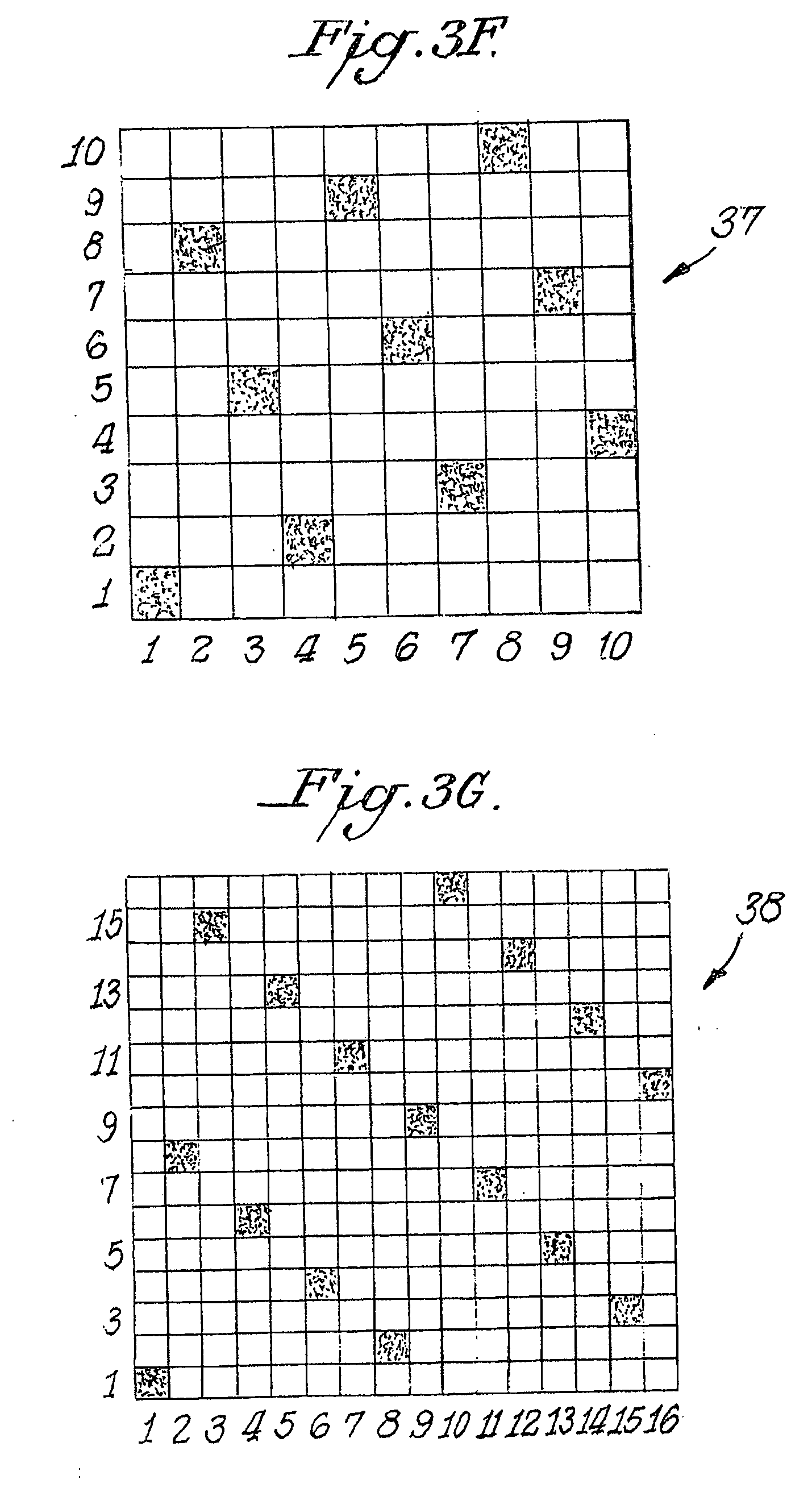Surface functional electro-textile with functionality modulation capability, methods for making the same, and applications incorporating the same
a functional and functional technology, applied in the field of electro-extile fabrics, can solve the problems of not being considered a conventional substrate, type 1 electro-textile, negatively affecting the textile properties, mechanical properties, flexibility, aesthetics, etc., and achieve the effect of increasing the conductivity of the fabric antenna
- Summary
- Abstract
- Description
- Claims
- Application Information
AI Technical Summary
Benefits of technology
Problems solved by technology
Method used
Image
Examples
example 1
[0176]A woven fabric (GVA-C-20) was made based on a plain weave construction. The fabric has as warp yarn a Cordura® / Lycra® elastic yarn and as weft yarn a silver-plated copper wire of 40 μm diameter, similar to the weft yarn of Comparative Example 1. The yarn density measured for this fabric was: warp 152 ends / in and weft 76 picks / in. The Qu value of this fabric measured via the microstrip resonator measurement was 84.5 from one side of the fabric and 84.1 from the other side of the fabric.
[0177]This fabric, according to the present invention, displays a surprisingly high conductivity compared to the fabric of Comparative Example 1, despite the fact that the weft yarn density of this Example is lower than that of Comparative Example 1. The main difference that remains to consider between the two Examples is in the warp yarn. The warp yarn used in Example 1 is an elastic yarn and, depending on the tension of the yarn chosen during weaving operation, the fabric may shrink in the warp...
example 2
[0179]A woven fabric (GVA-C-17) was made based on the same warp and weft yarns and the same warp and weft yarn density as the fabric of Example 1, but differs from the fabric of Example 1 in the weaving construction. This fabric had a satin 5 construction. The Qu value of this fabric measured via the microstrip resonator measurement was 69.3 from one side of the fabric and 108.2 from the other side of the fabric.
[0180]First, we observe that this fabric shows a surprising conductivity performance compared to all other fabrics displayed in the Comparative Examples and in Example 1 above. That is, the fabric of Example 2 shows an asymmetrical behavior in conductivity between the two faces of the fabric. In contrast, Example 1 showed a similar value for the conductivity within the experimental error for both faces of the fabric. In Example 1 and Comparative Example 1, the fabrics had a plain weave construction while in Example 2, the fabric has a satin weave construction. This differenc...
example 3
[0184]A woven fabric (GVA-C-5) was made as in Example 2 with the only difference that the weft yarn density of this fabric was 147 ppi. This value is almost twice as the weft yarn density of the fabric of Example 2. The Q value of the side of the fabric having a higher concentration of the warp yarns, measured via the microstrip resonator measurement method, was 81.2. The Q value measured from the side of the fabric with the higher concentration of the weft yarns based on the same method was 114.9.
[0185]As in Example 2, which was also based on the same fabric construction, this value is significantly higher than the value of the opposite side of the same fabric. This indicates that the conductivity of the fabric can be increased significantly by the content of metal on the fabric side via weave construction. The higher the Q, the higher is the effective conductivity of the material and the better the efficiency of the material for high frequency applications, such as EMI shielding o...
PUM
| Property | Measurement | Unit |
|---|---|---|
| width | aaaaa | aaaaa |
| thickness | aaaaa | aaaaa |
| thickness | aaaaa | aaaaa |
Abstract
Description
Claims
Application Information
 Login to View More
Login to View More - R&D
- Intellectual Property
- Life Sciences
- Materials
- Tech Scout
- Unparalleled Data Quality
- Higher Quality Content
- 60% Fewer Hallucinations
Browse by: Latest US Patents, China's latest patents, Technical Efficacy Thesaurus, Application Domain, Technology Topic, Popular Technical Reports.
© 2025 PatSnap. All rights reserved.Legal|Privacy policy|Modern Slavery Act Transparency Statement|Sitemap|About US| Contact US: help@patsnap.com



